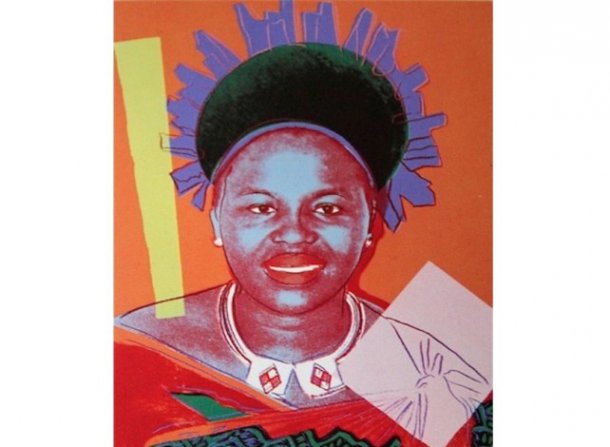A viagem de Warhol a África
Publicado17 Dez 2014

Imagem: Andy Warhol, Queen Ntombi Twala Of Swaziland, 1985
Andy Wharol, o nome incontornável do movimento pop art, chegou ao Cairo em 1956, quando era ainda um artista emergente, num período político conturbado no Egipto. Muito mais tarde, nos anos 80, regressou ao continente para um encontro com a Rainha da Suazilândia Ntfombi Twala, de quem fez um retrato. A Contemporary And publica um artigo em que dá conta do impacto destas experiências.
When Warhol touched down in Cairo, relations between Egypt and Israel were severely strained. The concrete apron at Cairo’s airport had become the stage for a military show of strength by Nasser’s government. “There were soldiers all over the place,” recalled Lisanby. Their plane was surrounded. Passengers were instructed to exit.
“Everyone had their passports removed,” writes Victor Bockris in Warhol: The Biography(2003), “and were marched out of the plane across a runway to the sound of screaming fighter jets, marching soldiers and shouted commands, and ushered into a Quonset hut where they were forced to watch a propaganda film, then marched back onto the plane.”
Warhol, who had originally intended to sightsee in Cairo and Luxor, was indifferent throughout the ordeal – “like a Zombie,” writes Bockris. He disembarked, watched the film, re-boarded the refuelled aircraft, and was in Rome by the next the morning.
The setting of Warhol’s first visit to Africa, an airport, also featured as the dominant location during a subsequent visit. After his first visit to Paris, where Warhol’s presence occasioned the “biggest transatlantic fuss since Oscar Wilde brought culture to Buffalo in the 1890s,” according to poet John Ashbery, Warhol travelled to London and Madrid. He bookended his European tour with a spontaneous visit to Tangier.
This Moroccan port city occupied a special place in the American imagination, in part due to the writings of Paul Bowles who first visited the city in 1931 on the advice of Gertrude Stein, and later settled there in 1947. By 1950, when journalist Charles J. Rolo published his article, “The New Bohemia”, Tangier was at the centre of a heady cultural movement where be-bop men and hipsters celebrated “the virtues of hashish” to slack-jawed Americans.
Mais em Warhol in north Africa
